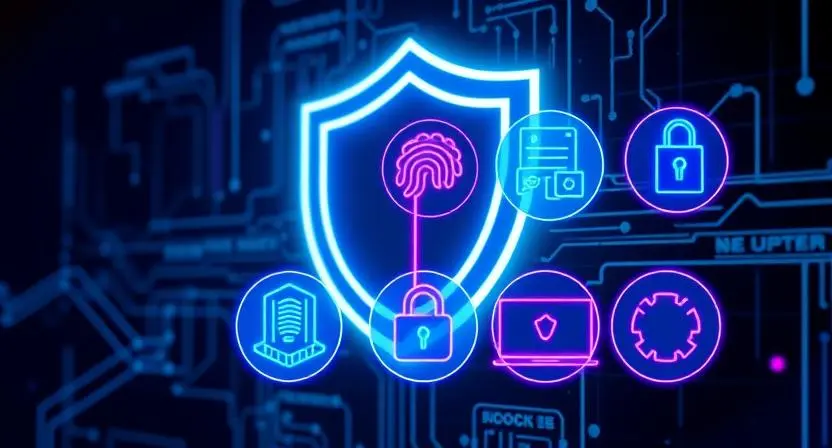
Data security management has become increasingly important in the digital terrain of today. Organizations have to use proactive approaches to guard their data assets as cyberthreats change in frequency and complexity.
Embracing the ‘Never Trust, Always Verify’ Approach with Zero Trust Architecture
When it comes to Data security management we know that Zero Trust Architecture (ZTA) eliminates implicit trust and therefore you can rest assured that you’re always verifying users and devices. Everything is vetted for just such an access request, whatever their source might be. Thus, it is implemented with least privilege, giving access only as needed. ZTA also uses real-time monitoring and micro segmentations to find and reduce the risks.
Harnessing AI and Machine Learning for Smarter Threat Detection
Artificial Intelligence (AI) is used to improve the security with respect to data security management through real-time identification and response to threats. Artificial intelligence systems analyse large amounts of data to quickly notify the security professional when abnormalities are detected such as when malware is present or a hacking attempt has been made. Basic chores like log analysis and vulnerability screening are automated so that human analysts can concentrate on difficult problems and thus increase general efficiency.
The Importance of Robust Endpoint Security
While talking about data security management, preventing illegal access in remote and hybrid working settings depends on securing endpoint devices. Endpoint protection systems, multi-factor authentication (MFA), and VPN use for safe connections should all be implemented by companies. Regular staff cybersecurity best practice training helps lower human error risks. Regular audits and monitoring guarantees early danger identification.
Implementing Advanced Multi-Factor Authentication
According to data security management principles, Password combinations with SMS codes are one of the traditional multi-factor authentication (MFA) techniques that are most susceptible to phishing attempts and SIM switching, therefore reducing their efficacy. Difficult to imitate advanced technologies like biometric authentication—which makes use of distinctive bodily characteristics—offer increased security. Through user interaction tracking and anomaly detection that can point to illegal access, behavioral analytics improve security even further.
Adopting Quantum-Resistant Encryption
When it comes to data security management, Defeating present encryption systems like RSA and ECC, quantum computers challenge them. Researchers are creating quantum-resistant methods for next security in order to offset this. Already, NIST has developed fresh encryption rules to resist quantum assaults. Companies have to start evaluating and modernizing their methods of encryption.
Building a Human Firewall
Reducing human error risks and averting cyberattacks depend on ongoing staff education. Frequent training enables employees to follow cybersecurity best standards, safely handle passwords, and identify phishing. A staff focused on security reduces weaknesses and increases general defense. Using continuous awareness campaigns to involve staff members helps to prevent active threats. Putting money into education helps workers to become the first line of protection against cyberattacks.
Securing the Supply Chain
When it comes to data security management we know that preventing supply chain intrusions depends on evaluating and tracking vendor security. Companies should do extensive risk analyses, enforce security policies in contracts, and start ongoing observation. Real-time data guarantees security standards’ compliance and helps find weaknesses. Frequent contact with suppliers improves threat avoidance by means of cooperation.
Protecting Information at Rest, in Transit, and in Use
At all phases—at rest, in transit, and in use—comprehensible encryption protects data. While transmission encryption stops eavesdropping, encryption of stored data guards against unwanted access. These days, emerging technologies provide safe encrypted data processing free from exposure. These steps guarantee integrity of data, regulatory compliance, and breach avoidance.
Analyzing Recent Data Breaches to Strengthen Security
New data leaks show how urgently better cybersecurity is needed. While this suffered a credential-stuffs assault exposing genetic data, T-Mobile’s 2023 breach revealed 37 million consumers because of API vulnerabilities. These events highlight the need of consistent security upgrades and tight access limits. Teaching consumers on password hygiene can help stop such assaults. Organizations have to always improve their security systems to fight changing hazards.
Adapting Security Strategies for AI-Driven Threats
AI is changing cybersecurity and finds application both defensively and aggressively. AI responds automatically, improves threat detection, and examines trends to stop assaults defensively. Cybercriminals employ artificial intelligence aggressively to create advanced phishing, automate malware, and evade security systems. Organizations have to constantly update threat intelligence and use AI-driven security technologies if they are to adjust. Maintaining ahead of changing cyber threats requires a proactive strategy combining artificial intelligence with human knowledge.
Data security management calls for proactive thinking, ongoing adaptation, and improved technology integration. Companies have to adopt creative security plans, tighten access policies, and train staff members to help to reduce hazards. Resilience will depend mostly on a strong security culture and innovative defenses as threats change.
